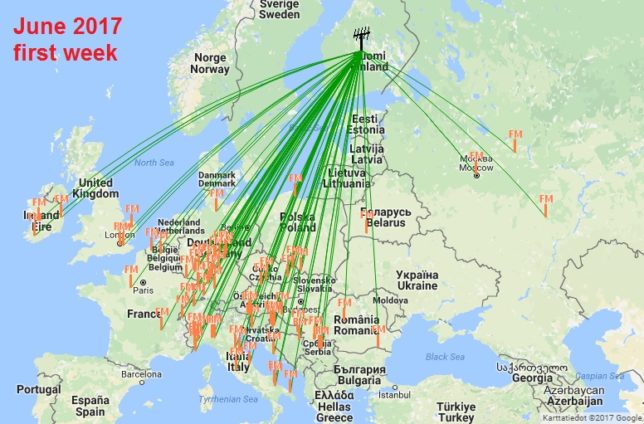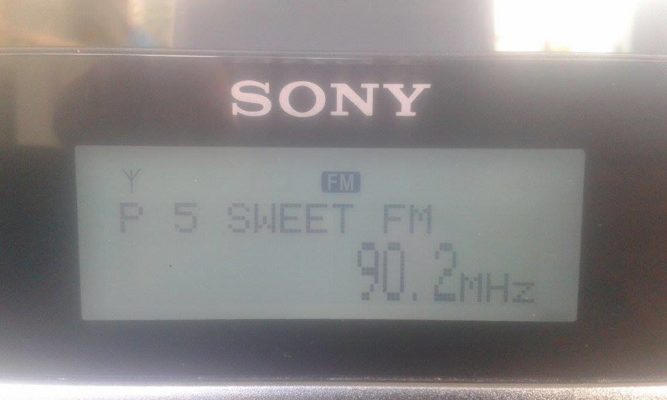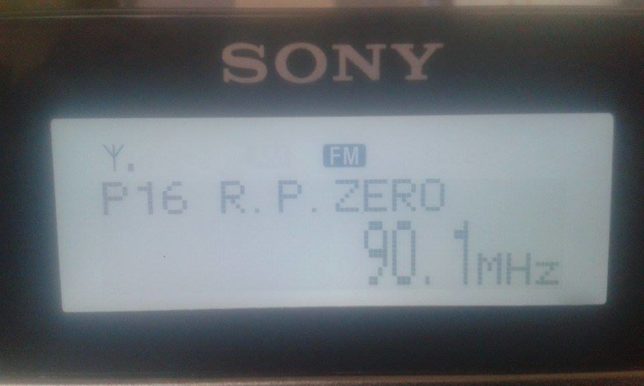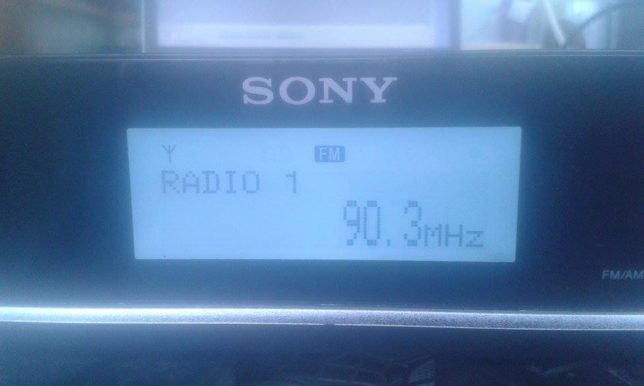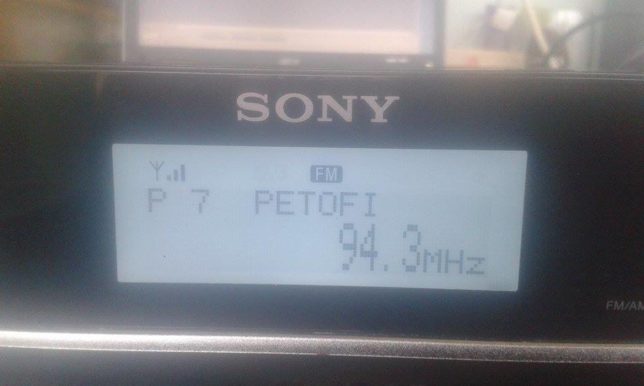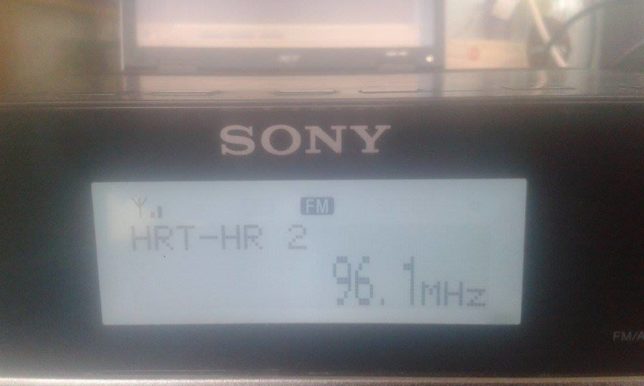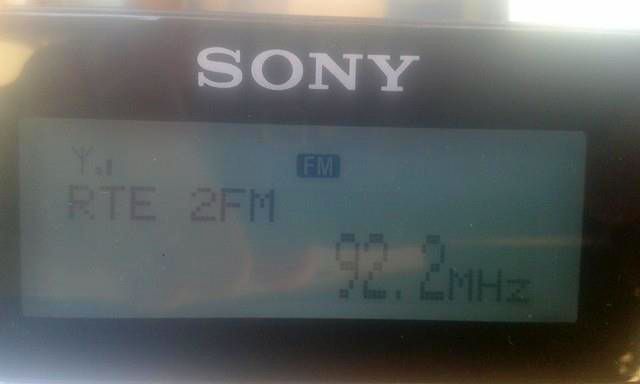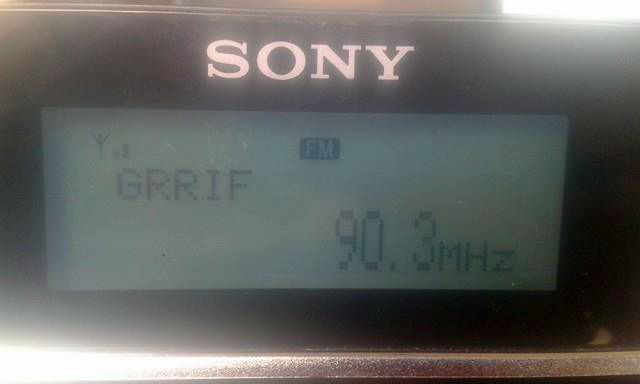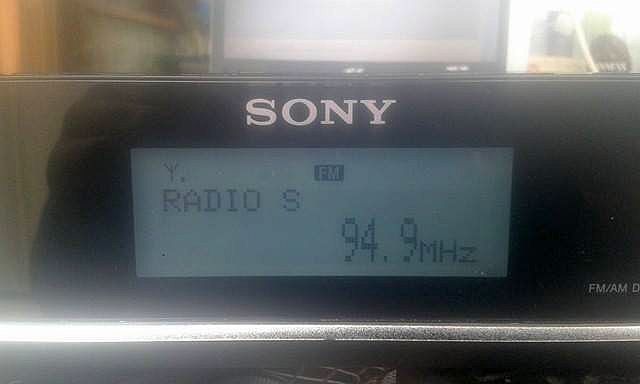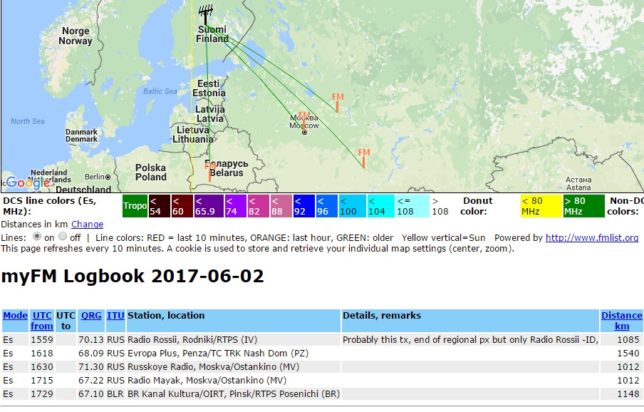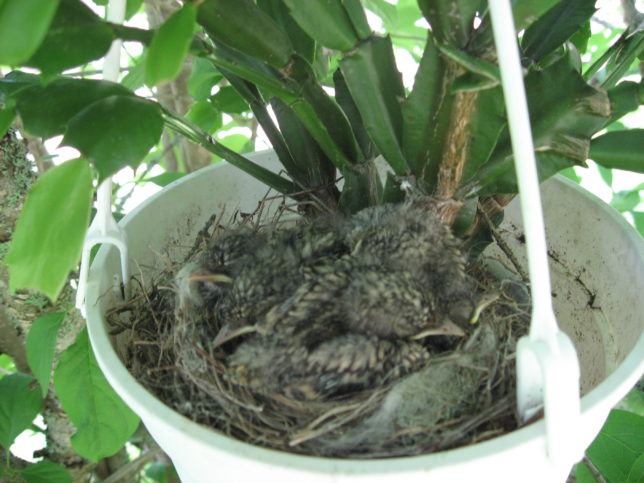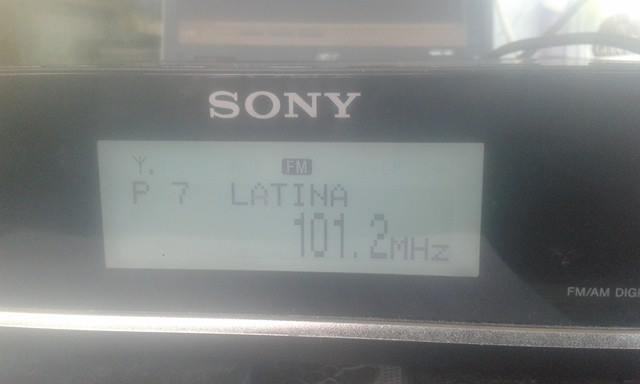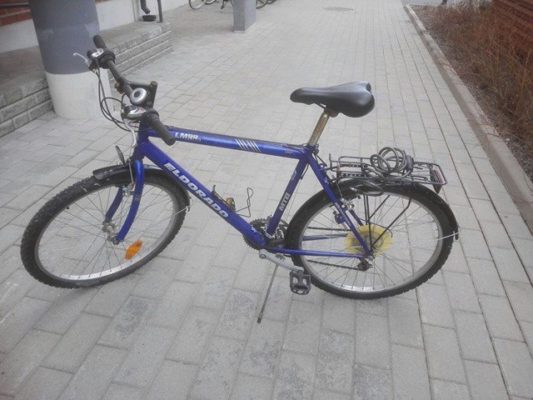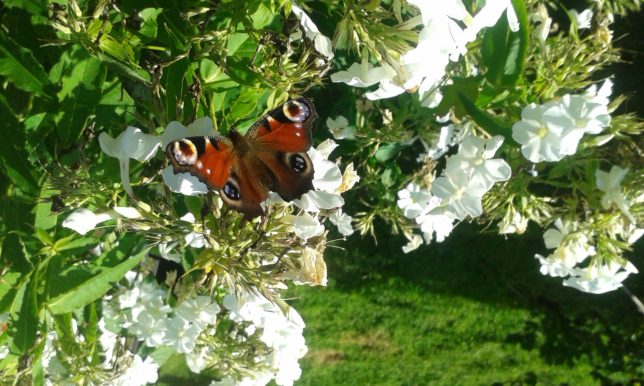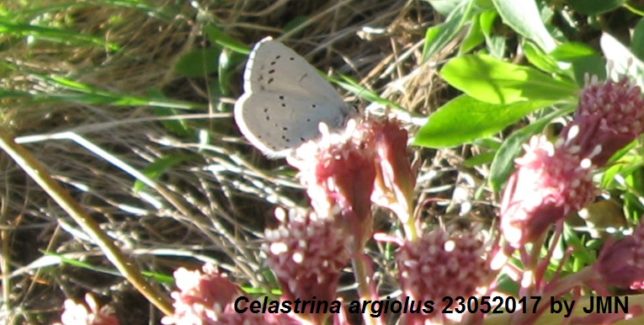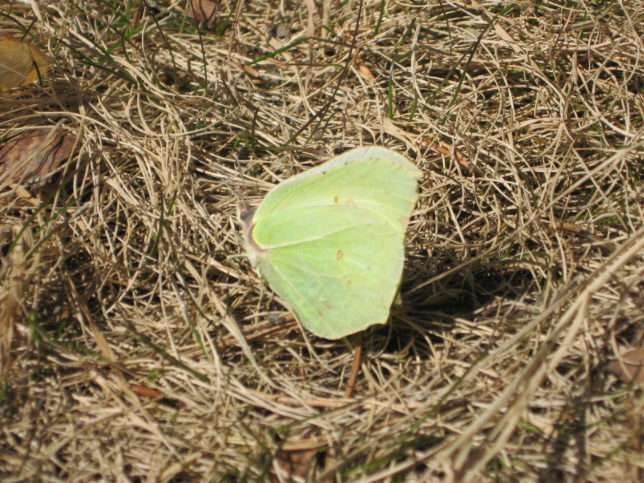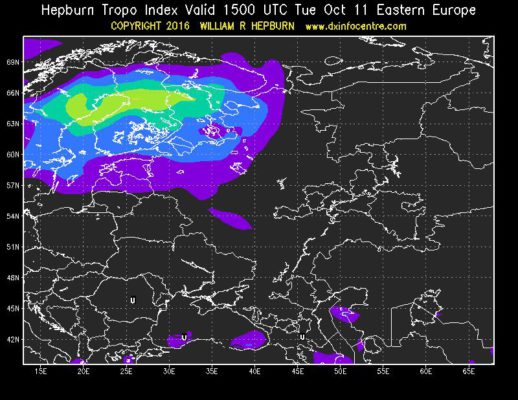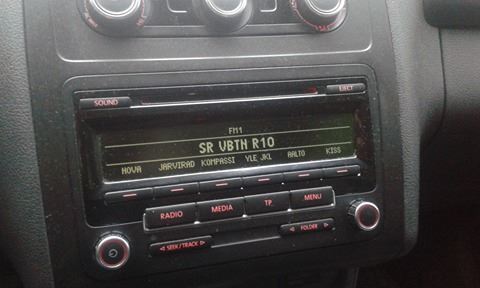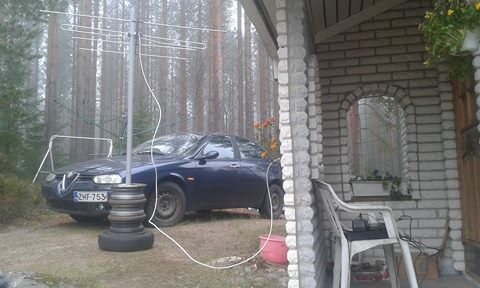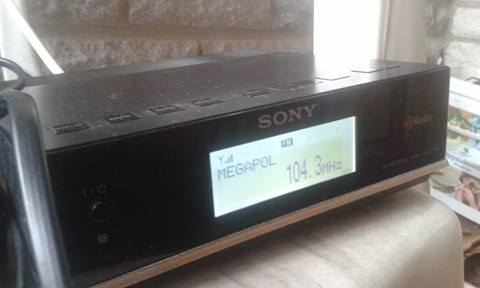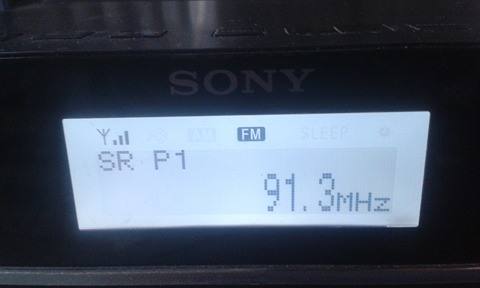An afterwork opening totally surprised and the first ID ”..19 sat, slusate Radio Postaju Vinkovci” never ended up to the recording. Luckily the news tune after ID, together with written ID, could lead to a reception report 🙂 Soon conditions turned to Italy. Very quick fading and weird conditions also today. Most of the band was empty, but on few frequencies was continuous ”pile up” full of stations fighting of airspace, 10-15 seconds each.. In the same time French and English stations were aubidle. Like yesterday, neither today none of the directions really opened. So far the first week of June has been pretty good with 86 logs.
Avainsana: FMDX
Late night conditions indicate usually a morning start. DX Sherlock looked fine in the morning, and soon French stations faded in. The highest noted frequency was 94.5 MHz. Not long lasting opening, all gone before I even left to work around 0730 UTC. Blind recording (95.7 MHz) during work day was practically empty, except multiple meteors. In one of them bright id as ”Radio Een” brought new heard MS country BEL! In the evening some Komi on OIRT. Identified stations visually: http://www.fmlist.org/fm_logmap.php?datum=2017-06-06&omid=1183
Today’s highlights (once again)
New meteor country BEL (clip: Radio 1)
A new-for-me French station Sweet FM
For 2 hours short-lasting but strong reflections from West to East Europe, very difficult to follow and MUF was moving 80-100-80-100-80 continuously. Band was silent for 5 minutes, and open for another 5 minutes, then same again.. Still one new-for-me station Ritmo 80 from Bari on 87.8. Bari needs a bit overlong skip (2453 km) which happens every now and then during weak Balkan openings. Maybe Adriatic sea and tropospheric ducting helps a bit!?
Full log here: http://www.fmlist.org/fm_logmap.php?datum=2017-06-05&omid=1183
An interesting tour today starting at 1125 UTC from Ireland (only RTÉ high power transmitters).
Soon lower band was filled with weak Italians (South Finland MUF 108),
travelling from Piacenza and Torino
little by little to West and surprisingly hitting to Switzerland!
Then skip was getting shorter, offering again only high power transmitters (BR, SWR, MDR).
After a silent hour new start to Serbia.
Some guys logged also rare Kosovo and Albania. An arabic double hop with ROU/BUL, more in South coast, which where ided as Egypt. Unfortunately there was like a wall around 97 MHz, only once I noticed Balkan over 100 MHz. Few new-for-me stations from Piemonte, SUI and SRB. Full log here.
Small afterwork RUS opening started at 1545 UTC, highest noted frequency here 90.6 MHz (:D). I lost few valuable minutes scanning CCIR frequencies, as the regional window was all the time going on OIRT, by GTRK stations. 70.4 MHz gave weather for Ulyanovsk, more interesting was 70.1a, which went to network without proper ID. It could have been GTRK Ivteleradio or GTRK Vologda, because the skip was very short (~1100 km). After 16 UTC Europa Plus Penza had local program on 68.09, later skipping to Moscow (exact 1012 km). Also some Belarus mixing from other cloud. Short skip is much more common on OIRT, and there are many interesting GTRK and private station in Moscow and nearby.. worth of trying!
New birds:
18) Muscicapa striata winters in tropical Africa. It builds nest almost everywhere.
19) Turdus pilaris
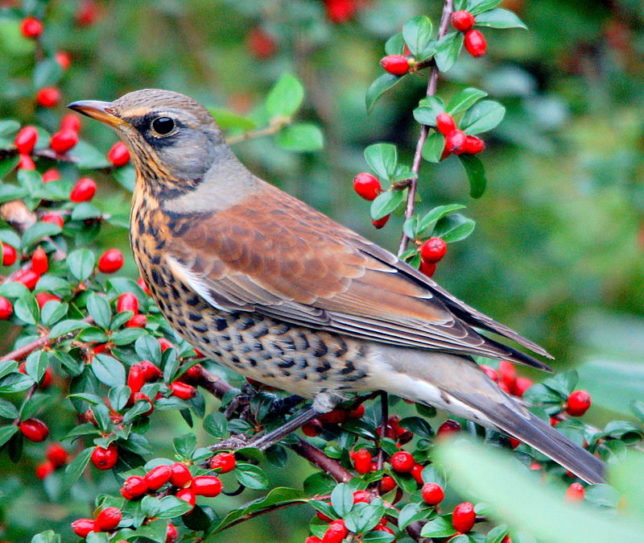
By Arnstein Rønning – Own work, CC BY-SA 3.0, https://commons.wikimedia.org/w/index.php?curid=14936065
20) Dendrocopos major
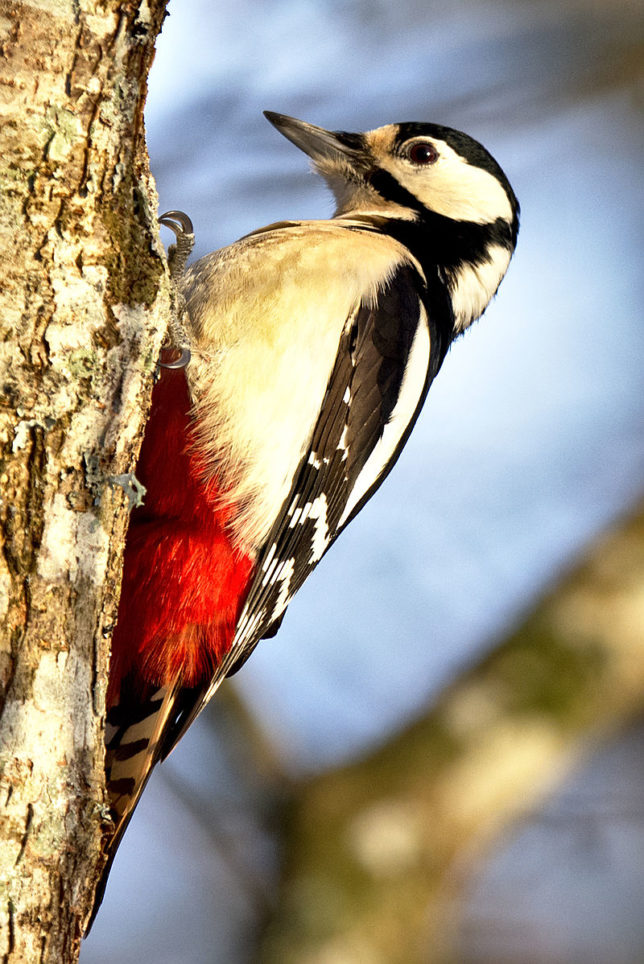
By Hangsna – Own work, CC BY-SA 4.0, https://commons.wikimedia.org/w/index.php?curid=46082936
First WhatsApp alert came already around 9.00 local time from TV Voice on 65.75 MHz, but conditions didn’t start yet. After full 7 hours work day next alert came during my way home, and made me push gas pedal a bit deeper. It took some time to open the rx, because a (wanted) guest arrived to dacha just a bit after me, bringing a bike I bought.
Finally to the balcony, a fading OIRT opening offered many GTRK stations during the regional window 1510-1559 UTC, with shorter skip to Belarus. After 16 UTC another opening started suddenly bringing stations from Benelux and nearby, unfortunately it was very short.. Today’s personal log can be found here. 48 logs so far are an average start for this season!
Today’s highlights:
Radio Latina 101.2 MHz (LUX) broadcasting in Portuguese(!)
A new-for-me GTRK station ”Chuvash Radio”
The conditions continued today with low band opening to Balkan, later East coast Italians and Croatia and after a break Torino for a while. The highest noted FQ was 98.5 MHz.
Today’s personal log is here: http://www.fmlist.org/fm_logmap.php?datum=2017-05-23&omid=1183
Today was also a good butterfly day, here are some identified colourful butterflies from today, for our international readers who may like to know in which kind of region we crazy ES catchers do live:
Anthocharis cardamines

By: Michael H. Lemmer – http://www.naturkamera.de Own work, CC BY-SA 2.5, https://commons.wikimedia.org/w/index.php?curid=1394294
Aglais io
Callophrys rubi
Celastrina argiolus/Papilio argiolus
Gonepteryx rhamni
Pieris napi
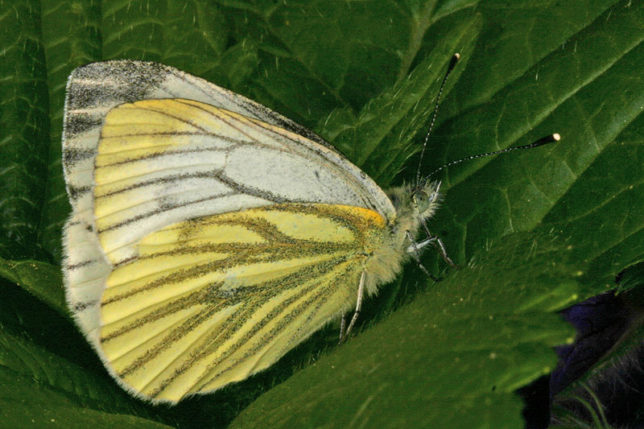
By Marina Jacob – Eget arbete, CC BY-SA 3.0, https://commons.wikimedia.org/w/index.php?curid=988102
Untill today, May has offered only small OIRT openings in Central Finland. Recently TUR and F have been logged in other parts of Finland. All these small openings made us to wait for something better.. Finally today we had a good opening from Orenburg/Kazakstan (till 108 MHz) to Donetsk/Ukraine (low band), then skipping to Romania/Czechia/Germany (MUF appr. 96), including Switzerland, ending to small low band F/BEL. The conditions started during the test of new antenna feed to my balcony QTH, timing was almost perfect – against the Murphy’s DX law when conditions begin during the antenna is under maintenance work 😛 My personal log will be updated here little by little.
Today’s highlights:
Italian language show(!) from Radio Aksay in Kazakstan (clip)
SUI for the first time with proper ID (Radio Pilatus 95.7 MHz)
Meanwhile ES has been far away, birds have been my favourite objects to catch througout air. Here are some more species seen this month:
Prunella modularis (Dunnock) has been a common guest in garden. They return here from Central or Southern Europe from March to May.
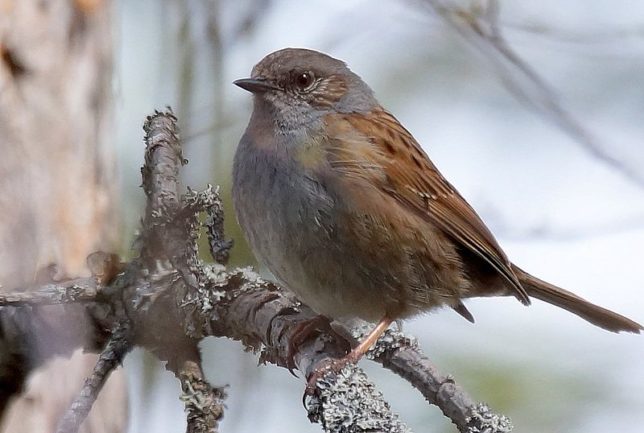
By Alpo Roikola – Oma teos, CC BY-SA 3.0, https://commons.wikimedia.org/w/index.php?curid=48112621
Corvus corone cornix (the hooded crow) and carrion crow (Corvus corone corone) are two closely related species. Roughly saying the fully black version carrion crow does live in England, France, DACH countries and Iberian Peninsula, meanwhile the grey version is found across Northern, Eastern and South Eastern Europe, as well as parts of the Middle East.
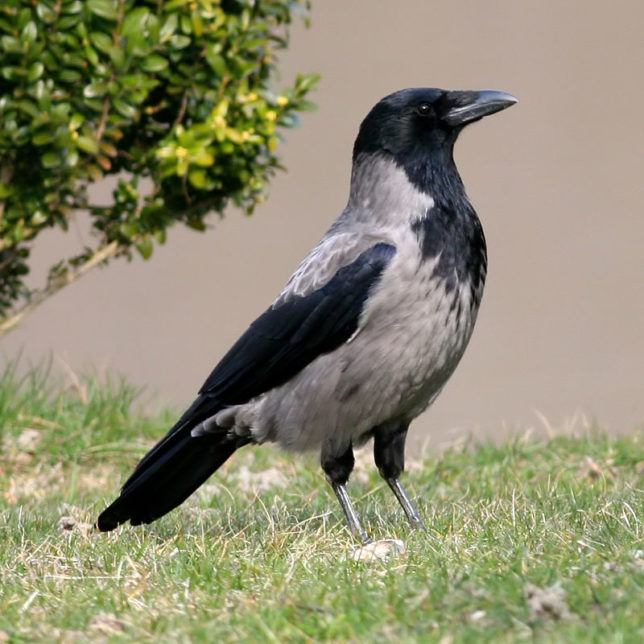
By Ken Billington – Praca własna, CC BY-SA 3.0, https://commons.wikimedia.org/w/index.php?curid=12342566
Pica pica (magpie) is one of the most intelligent birds, and it is believed to be one of the most intelligent of all non-human animals. At least it looks always elegant!
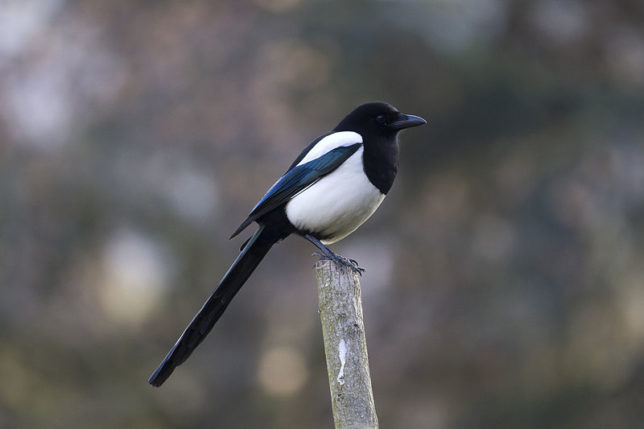
By Pierre-Selim – Flickr: Pica pica, CC BY-SA 2.0, https://commons.wikimedia.org/w/index.php?curid=19400996
Turdus iliacus (redwing) comes back from Western and Southern Europe during April.
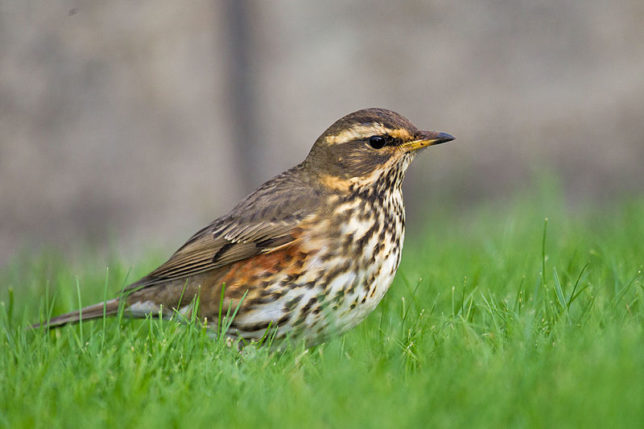
By Andreas Trepte – Praca własna, CC BY-SA 2.5, https://commons.wikimedia.org/w/index.php?curid=1907996
Anas platyrhyncho (mallard) is also known as wild duck.
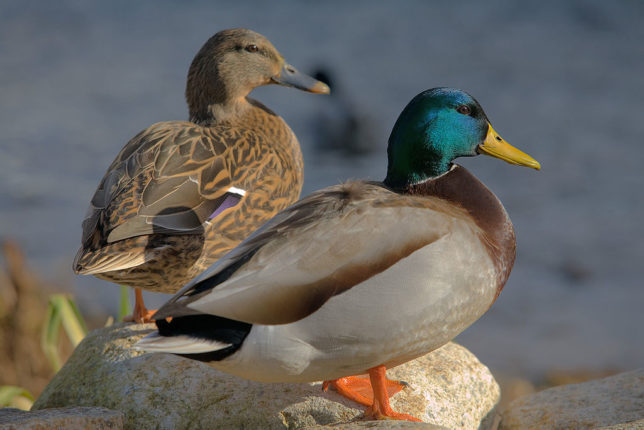
By Diliff – Oma teos, CC BY 2.5, https://commons.wikimedia.org/w/index.php?curid=490649
Bucephala clangula (goldeneye) is easy to recognize because of it’s white dot.
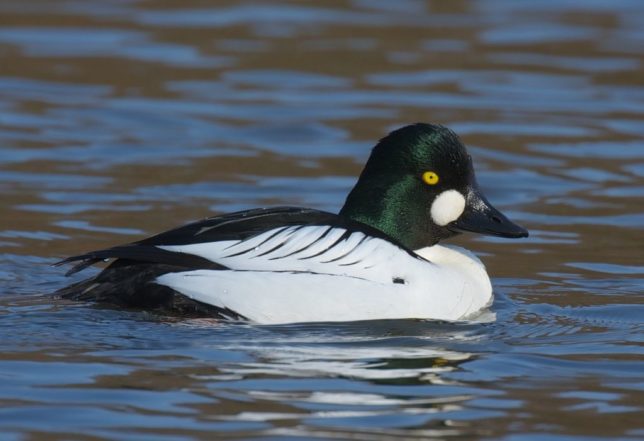
By https://www.flickr.com/photos/sbern/ – https://www.flickr.com/photos/sbern/13471929904/, CC BY 2.0, https://commons.wikimedia.org/w/index.php?curid=36391956
Motacilla alba (white wagtail) winters in Africa and returns in April to Central Finland. Traditionally it is said it takes just short time to summer from the first sight of white wagtail.
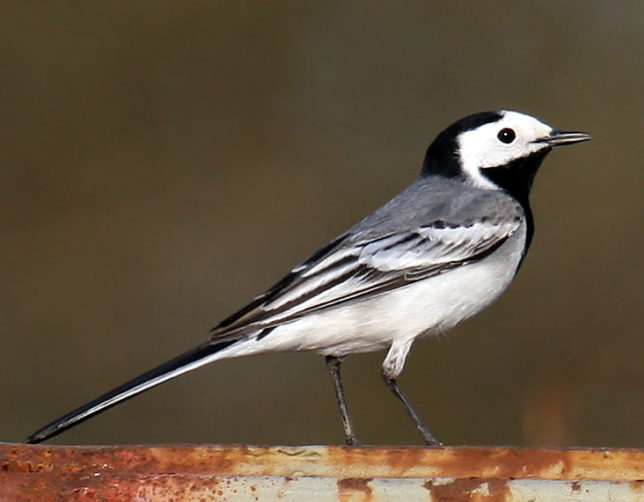
By Andreas Trepte – Oma teos, CC BY-SA 2.5, https://commons.wikimedia.org/w/index.php?curid=3800685
Phoenicurus phoenicurus (redstart) winters in Northern Africa. It is familiar in whole Europe.
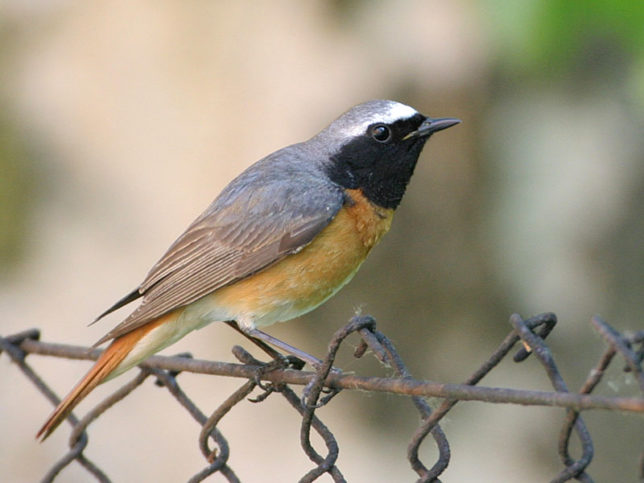
By Thomas Kraft (ThKraft) – Eget arbejde, CC BY-SA 2.5, https://commons.wikimedia.org/w/index.php?curid=2160906
Ficedula hypoleuca (European pied flycatcher) winters in Southern part of West Africa. It is known to attack and disturb other birds in different ways and a male may have two females. So kind of bastardo!
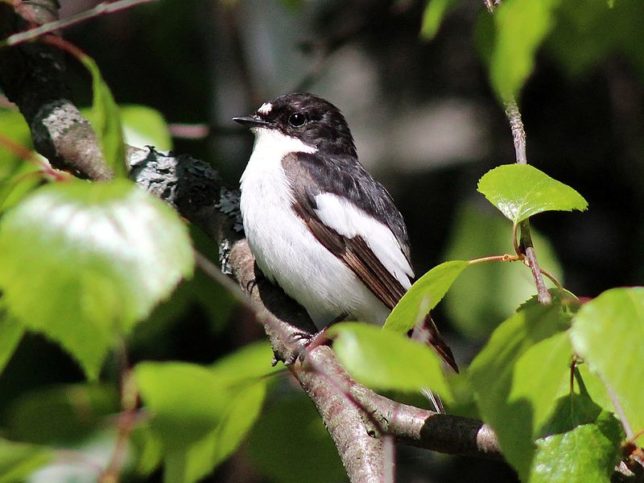
By Estormiz – Own work, CC0, https://commons.wikimedia.org/w/index.php?curid=19848601
Cuculus canorus (cuckoo) is the only voice-identified of these birds. It is difficult to see, but easy to hear. The male’s song, goo-ko, is usually given from an open perch. During the breeding season the male typically gives this vocalisation with intervals of 1–1.5 seconds, in groups of 10–20 (sometimes I have counted even more than 100!) with a rest of a few seconds between groups. The song starts as a descending minor third early in the year in April, and the interval gets wider, through a major third to a fourth as the season progresses, and in June, around the midsummer, the cuckoo ”forgets its tune”.
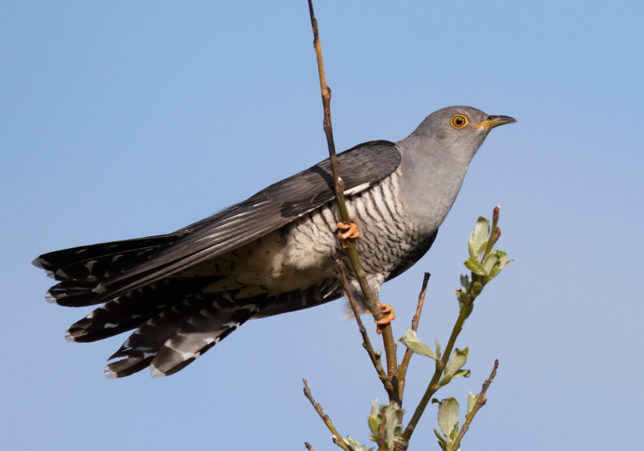
By Cuculus_canorus_vogelartinfo_chris_romeiks_CHR0791.jpg: Vogelartinfoderivative work: Bogbumper (talk) – Cuculus_canorus_vogelartinfo_chris_romeiks_CHR0791.jpg, GFDL 1.2, https://commons.wikimedia.org/w/index.php?curid=16077960
Actitis hypoleucos (sandpiper) is common in whole Europe.
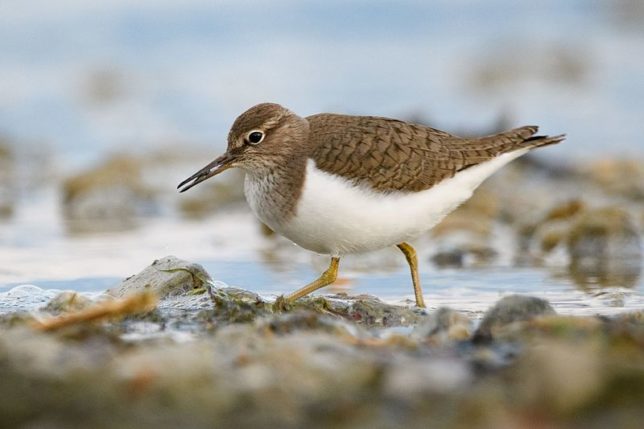
By Christoph Müller – Own work, CC BY-SA 4.0, https://commons.wikimedia.org/w/index.php?curid=58660296
After nice tropo signals to Sweden there was a great aurora signals. Geomagnetic activity was intensifying as Earth passes through the wake of a CME that was hit our planet. Below is short log:
73.49 1607 BLR BR Radio Stalitsa, Braslaw/RTPS 736km
72.98 1611 BLR BR Radio Vitebsk, Braslaw/RTPS 736km
71.48 1617 BLR BR Radio Vitebsk, Vitebsk/RTPS Jurjeva Gorka 824km
73.10 1638 RUS Grad Petrov, Sankt-Peterburg/Olgino (SP) 346km
71.69 1639 BLR BR Kanal Kultura, Brest/RTPS Rakitnica (BR) 1126km
67.64 1642 BLR BR Radio Vitebsk, Myadzel/RTPS Telyaki (MI) 818km
91.80 1700 S SR P2, Västervik/Fårhult TM (ka) 716km
100.30 1704 S SR P4, Skövde/Åsbotorp 2/Billingen TM (vg) 776km
+ plenty of OIRT Rossii stations.
Tropo forecasts promised good condx for Lapland, not much activity there, so results not known. Today’s ducting was favorable for Central Finland. In the morning just some typical SR stations for this QTH with fair signals (no RDS). However one personal new catch: Radio Rossii Karelia 72.17 just over the noise level with Tecsun, but clear ID. TNX JJH!
In the work (driving van) I was lucky to follow signals from 350-450 km improving all the day with the car radio. The morning was foggy, lot’s of accidents because of zero visibility and icy roads. The fog was accompanying us all day long, even temperature reached plus degrees in the afternoon. Still nothing special on lunch hour at home. Unfortunately Triax 4el can see only AZI 100-280 from the balcony…
As Janne (JJH) said: ”Kalix tulee niin lujaa, että sen pitäisi kuulua mummon hetekallakin” (culture-bound, impossible to translate). Thanks to my good old lad, I moved the Yagi from balcony to backyard and placed RX’s on a less-elegant garden chair. Between the pines, the Northern sky can be seen.
Word, Kalix was so strong, that it could have come even with a whip!
Usually here is YLE Lahti 50 kW / 166 km
..and here Järviradio Jyväskylä 3 kW / 34 km
Such a fresh autumn afternoon today, but with the hot coffee it was fun for two hours. Then it was already getting dark and conditions seemed to be stuck on this direction. New H stations ided and recorded, and nothing special was heard using V polarization.
SR-transmitters from Örnsköldsvik, Sollefteå, Vännäs, Lycksele, Arvidsjaur, Älvsbyn, Kalix, Överkalix and Gällivare were noted. Possibly also Storuman and Vuollerim (150 W!). For some loggings, please have a look: http://www.fmdx.tk/october-logs/

